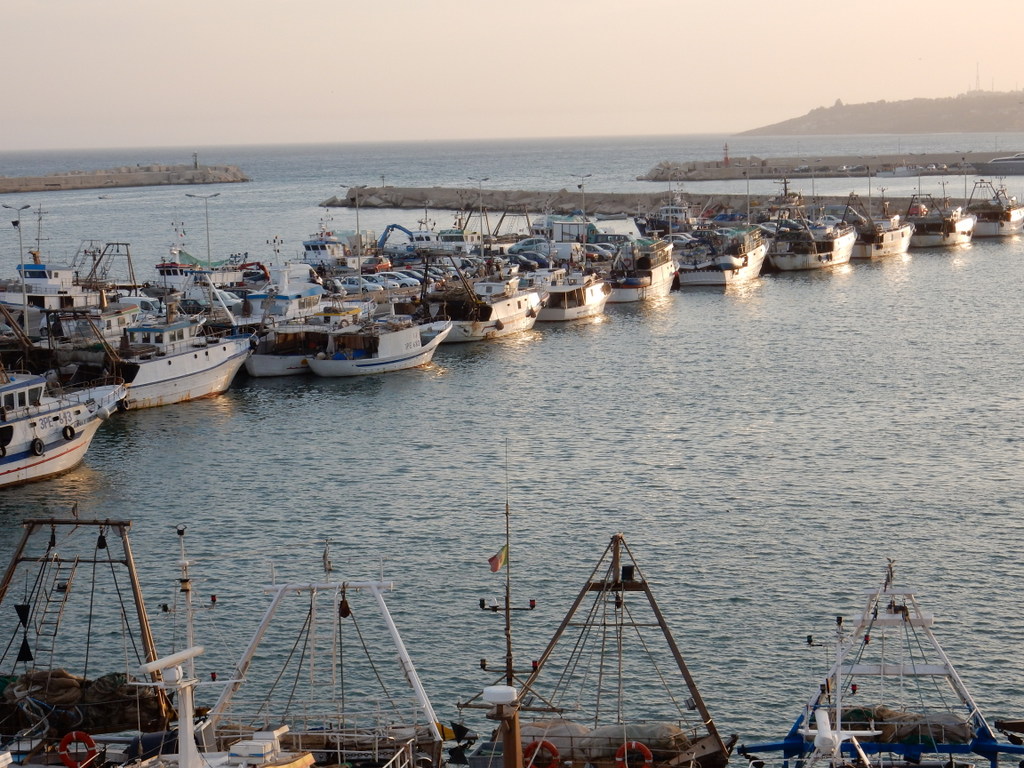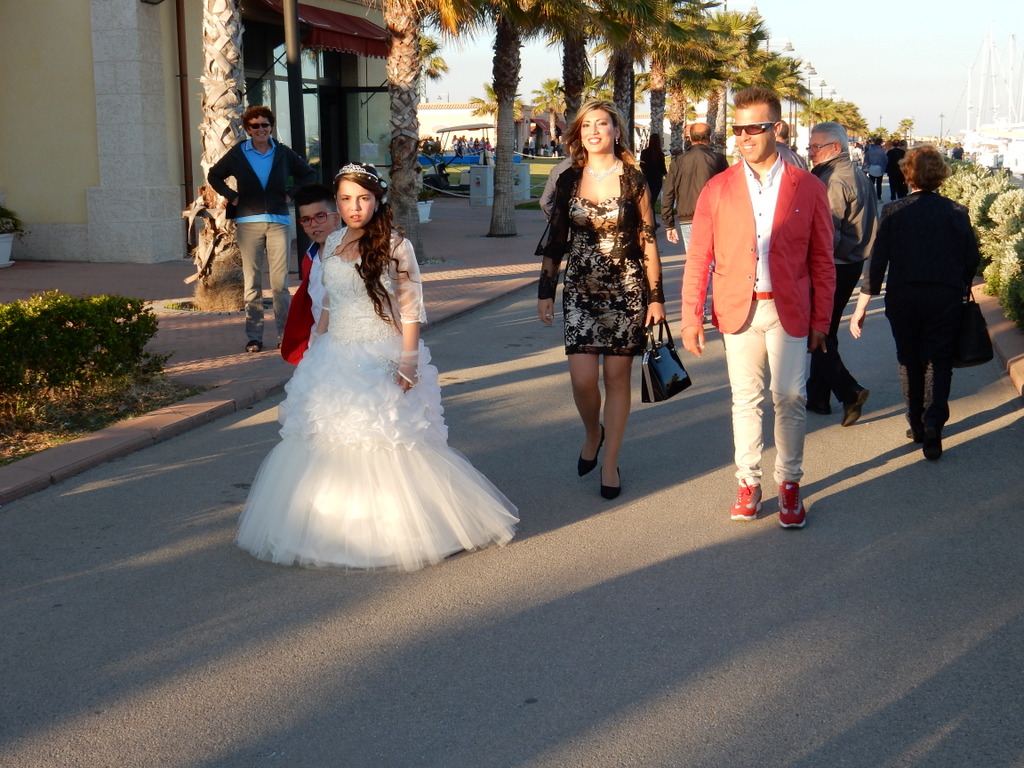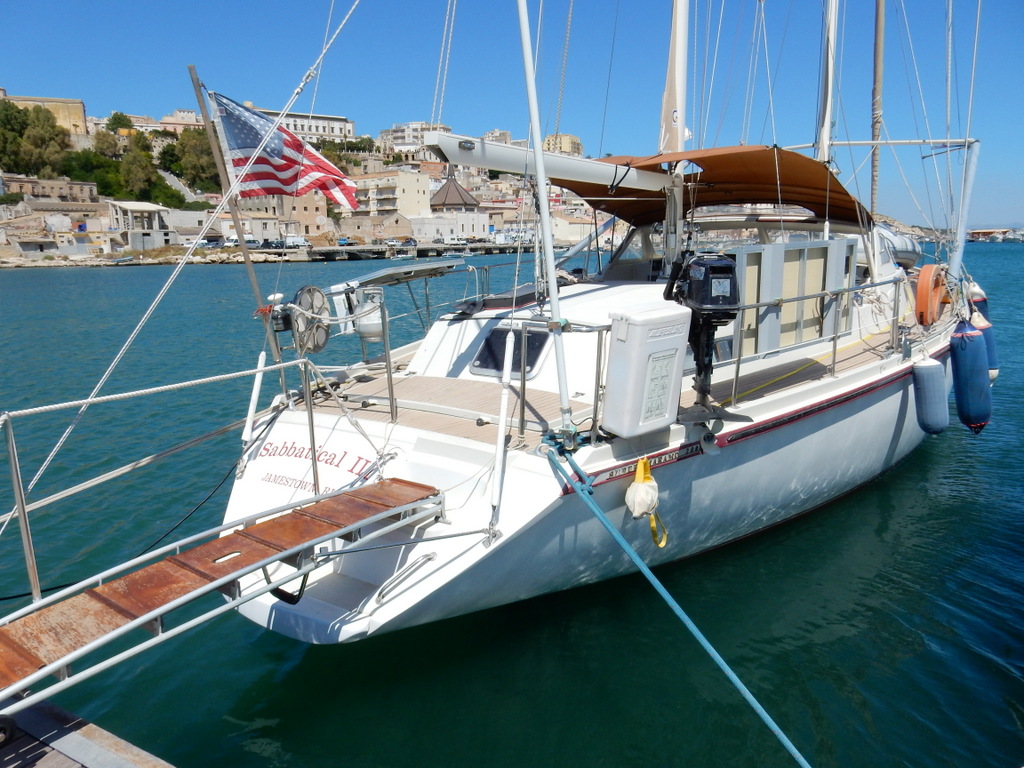
We left Siracusa on May 18 intending to head west along the southern coast of Sicily stopping overnight in various places in order to shorten the final leg of our trip to our new home in Sardinia. Our first stop was the large Marina di Ragusa near the city of Ragusa. We spent only 12 hours there before heading for Licata where we spent three days at the Marina di Cala del Sole. It is a new and not yet complete marina set in a planned tourist development that came to a halt in the Great Recession. Unfinished construction and idle cranes attest to the speed at which this project came to an abrupt end. The marina had lots of space and is very well protected by extensive breakwaters. The only problem for us is that wild dogs took up residence in the vacant land around the marina and they bark periodically throughout the night. Not a good situation for sensitive sleepers like us. Licata is an interesting town and we enjoyed walking around and sampling its ristorantes and trattoria. There is a Conad supermarket next door to the marina which proved very convenient for us.

On May 24th, we sailed 50 nautical miles west to the town of Sciacca, where a large fishing fleet is based. We were able to med moor at the pontoon of the local chapter of “Lega Navale Italiana”, a national association of Italian boaters. This is a charming town that dates back to the Greeks who enjoyed soaking in the thermal springs, as did the Romans who followed. It architecture reflects its occupation by, successively, Vandals, Ostrogoths, Byzantium, Arab North Africa, Normandy, and Aragon Spain. It was once a great port for the grain trade.






Tomorrow evening, Wednesday, May 25, we leave Sciacca for the 260 nautical mile passage to Carloforte, southwest of Sardinia. We will be taking advantage of two days of (forecast) easterly winds to get to Sabbatical III’s new home marina without having to head directly into the prevailing westerlies. We should arrive sometime during the day on Friday.
M.

Comments are closed.